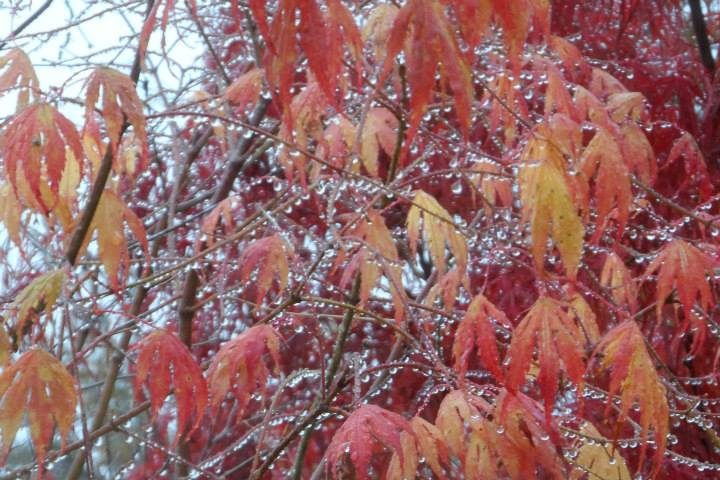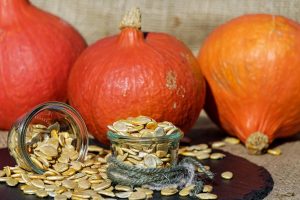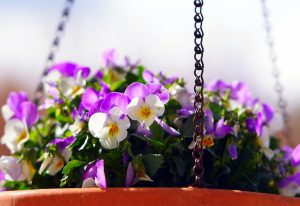
We are fortunate to live in an area where seasonal changes are so vivid and obvious. Though many of us dread the coming short daylight hours and rainy days we can take solace in the reality that these changes help our gardens thrive.
The Coming Dark
The longer nights can give us a chance for reflection and for gardeners this means reviewing how things grew, didn’t grow, how the tomatoes fared, what pests you had issues with, or what surprising new beneficial insects you discovered amongst your flowers. Get yourself a beautiful garden journal, get cozy in your favorite spot, pour a cup of your favorite hot beverage, and make notes on how things went. This is also a great time to make a wish list for some new things to try in the garden. Read up on beneficial insects and how to attract them and pick up some plants to get into the garden for them. Get on seed catalog lists, find some new books to peruse, or a good gardening magazine to subscribe to. Find recipes to use with the pesto you made, the pumpkin seeds you carved out of the pumpkin shell, the tomato sauce you canned or froze, or those pumpkins and winter squash you are storing from the garden. Sort the seeds you collected, cleaning the chaff and labeling them for use next year. Find your local seed library and get involved with their activities.

Cool Autumn Days and The Rain
Fall is a great time to plant. This is the classic time to get your spring bulbs into the ground, giving them time to settle in, build a root system, and get prepared to burst into bloom next spring. Daffodil, tulip, Crocus, Allium, Camas, hyacinth, and so many more lovely, fragrant, and colorful gems are available in local nurseries and garden centers and through mail order for you to plant. This is a fun activity to do with kids who can later watch their emergence in the hopefulness of spring.
This is also a wonderful time to plant trees, shrubs, perennials. Our soil stays warm enough through the fall for robust root growth underground. Fall rains help to nourish the growth and while your new plants settle in you don’t need to worry too much about supplemental watering. Next spring your plants will be primed for new growth and flowers with a healthy root system to support them.
Fall annuals such as colorful and sweet smelling pansies will weather the cold and rain while bringing cheer to your garden. Tucking a pot full on your porch or balcony will keep color front and center all winter long. Pansies are also edible so add a few to your salads this winter. there is one good reason to not spray them with pesticides! Primroses are also good choices and though they are technically perennial plants they often grow like an annual in our climate. You can enjoy their bloom through fall and part of winter and then they will rebloom in the spring if planted in a semi-sunny spot in the garden. Certain varieties like ‘Wanda’ primroses will multiply and you can divide them and replant them in different parts of the garden in the spring or fall. 
Even More Rain
We definitely complain about the rain in the Pacific Northwest. But that rain is responsible for the magnificent conifer trees that dominate our natural landscapes and provide windbreaks, shelter and food for wildlife, and manage stormwater cascades during heavy rain events. Conifers and broadleaf evergreens mitigate flooding and erosion from heavy rain. They also continue to photosynthesize throughout the winter, warming air around them and reducing frosty areas in our gardens. New growth on familiar favorites like true Fir (Abies), Douglas Fir and Spruce can be trimmed and used for cold remedy relief. And they are beautiful! The rain we get during the winter recharges our groundwater, adds to the snowpack in the mountains and keeps us in clean drinking water all summer long. We should always be thankful for our natural systems and protect them by adopting healthy gardening practices.
Light and Darkness
Fall is not only a time of darkness. The light in the fall is spectacular for highlighting the gorgeous color of leaves on the deciduous plants in our gardens, local parks or natural areas. The angle of the sunlight reaching the earth changes with the Fall Equinox, reaching us through a thicker layer of atmosphere which absorbs the shorter wavelength color spectrums of light, leaving us with more gold to red tones. What a wonderful world! On sunny days take advantage of this change and practice your plant photography or watercolor art in the garden!
Welcome to Autumn!
